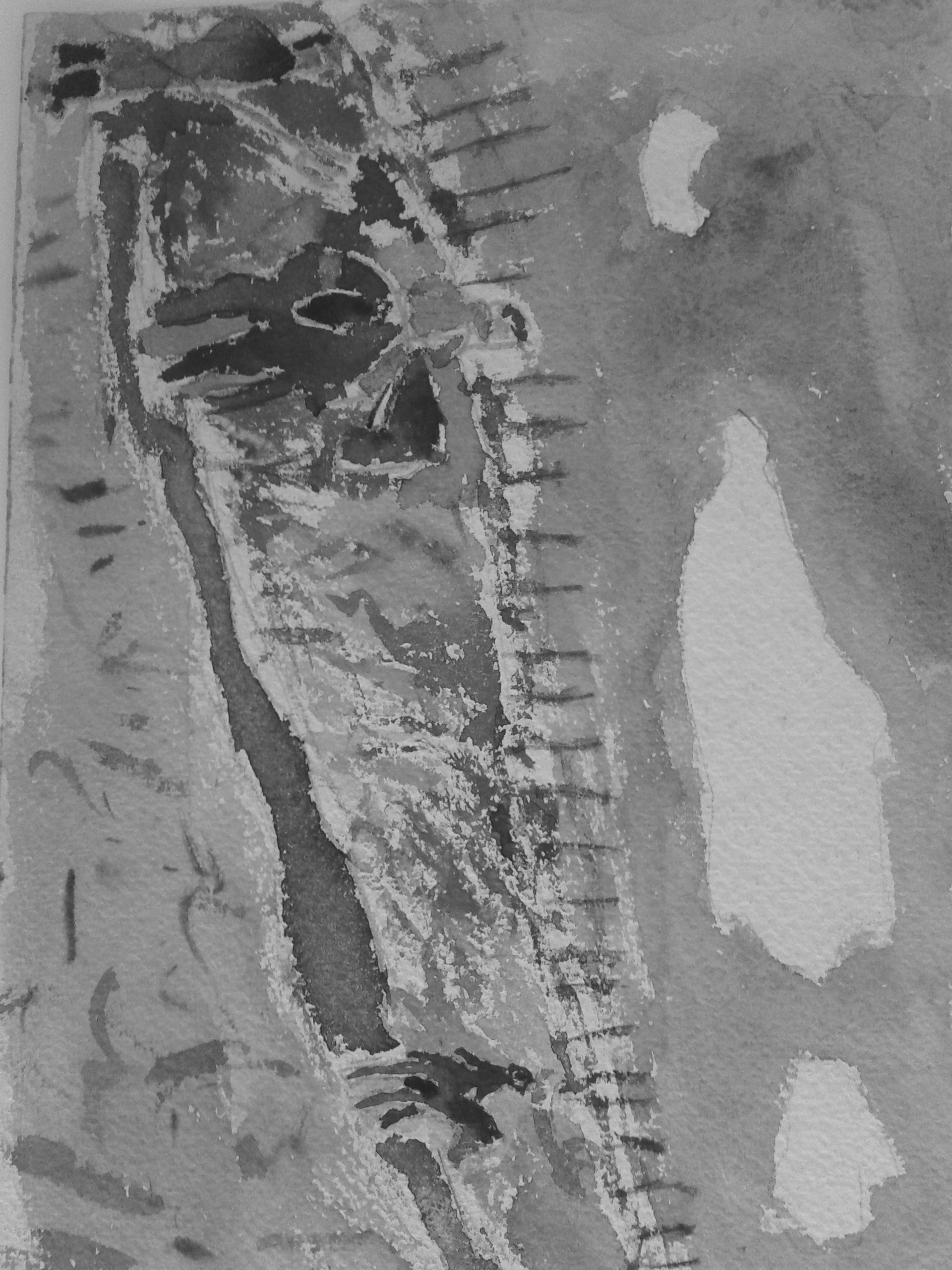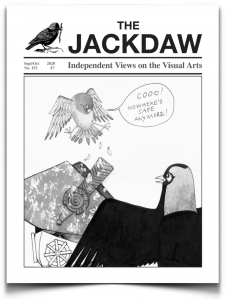 I paid a first visit to St. Ives in the late 1950s and will never forget my first glimpse of the town from the hill above the railway station. For someone to whom the word ‘sea’ had hitherto largely meant the pebbly beaches and endless mudflats of the coast of East Kent, the turquoise water, dazzling white sands and rows of granite or whitewashed buildings cascading down steep hills towards the town’s harbour were an utter revelation. Not a single yard of dual carriageway existed at that time between London and Land’s End. The old A30 still ran through every town, village and hamlet on its route as it pursued a narrow, twisting and dangerous 300-mile course.
I paid a first visit to St. Ives in the late 1950s and will never forget my first glimpse of the town from the hill above the railway station. For someone to whom the word ‘sea’ had hitherto largely meant the pebbly beaches and endless mudflats of the coast of East Kent, the turquoise water, dazzling white sands and rows of granite or whitewashed buildings cascading down steep hills towards the town’s harbour were an utter revelation. Not a single yard of dual carriageway existed at that time between London and Land’s End. The old A30 still ran through every town, village and hamlet on its route as it pursued a narrow, twisting and dangerous 300-mile course.
At least part of the magic of West Cornwall lay at the time in its relative isolation as well as in the extreme cheapness of property there which attracted painters, potters and poets – to say nothing of sculptors and assorted scribes – of national and international as well as purely local substance to its welcoming embrace. Because an artist cousin of mine – John Peace – lived in the town already I enjoyed instant introductions to many of the area’s resident talents.
During the last two months of the 1950s I returned to St. Ives with the aim of living and painting there full-time myself – an arrival which coincided closely with a highly unlikely sojourn there by Francis Bacon – and I was then resident in that general area, on and off, for the next twenty years.
What I propose here is that those two decades – from 1960-1980 – formed the last era which may ever exist in which some degree of communal sense, purpose and integrity will ever prevail again in British art which now, by contrast, generally seems to grow more cynical, corrupt and purposeless by the day. To my mind, at least, one of the factors that underwrote the significance of that era was its relative proximity to the ending of the Second World War which, in spite of all its horrors, at least provided some inkling of a reality with which it was difficult to argue. Some of the older artists such as Peter Lanyon had served in that war with distinction while others had suffered years of captivity e.g. Terry Frost, Adrian Heath and Roger Hilton, the last having been captured during the unsuccessful commando raid on Dieppe. Karl Weschke, by contrast, spent youthful years as a prisoner-of-war of the British. It was therefore not just artistic freedom that all were keen to enjoy after years of restraint but the liberty to live and act more or less normally again. Hedonism was certainly in the air and West Cornwall became, however briefly, a kind of Bohemia-by-Sea.
Ben Nicholson had recently left St. Ives for good at the time of my arrival there but others such as Bryan Wynter, Patrick Heron, Barbara Hepworth, Bernard Leach and the excellent poet W.S. Graham were still very much in evidence, as were Alan Davie and William Scott for at least part of the time. I was merely one of a raft of younger artists which included Trevor Bell, Anthony Benjamin, Brian Wall, Bob Law, Jeff Harris and Roy Conn. Large numbers of purpose-built studios still existed from earlier artistic eras and for a time I was lucky enough to share a vast example, built originally for Stanhope Forbes, at the top of Newlyn Hill.
In the long run I came to disagree increasingly with much of the tenor of the art – and art criticism – that came out of West Cornwall at that time because its doctrinaire emphasis on abstraction seemed to me at once unnecessarily coercive and contrived in the face of the overwhelming majesty of the local landscape and coast.
My maternal great-grandfather, a railway engineer, originally left his home at East Looe in east Cornwall to build a railway in East Kent and I have never ceased, wherever I have lived in the world, to feel a kind of ancestral tug which continues to identify Cornwall for me as a homeland. Rather unusually, for an artist, I represented the county at cricket and am still probably remembered there, if at all, more for my former prowess with a cricket ball than with a paintbrush.
All of the artists I have mentioned already were certainly ambitious but not necessarily in the degrading way which in more recent times has almost become a norm. It was at the Royal College of Art in 1962, I think, that I first heard the ominous expression ‘making it’ used in connection with David Hockney to whom I had just been introduced. To artists such as Peter Lanyon or Roger Hilton such an expression would rightly have been anathema. What precisely was the ‘it’ the artist was supposed to be ‘making’? Money and largely unearned fashionable fame? Or a reputation blown up simply with a giant public relations bicycle pump?
During the last two and a half years of his life Roger Hilton, who was confined to bed with a painful illness, produced a series of small, colourful gouaches of unending wit and good humour. Roger had a very sharp tongue indeed, however, and it would be intriguing and instructive to have known what he might have thought of future events such as the Turner Prize which have consistently divided the world of British art since his death. Both he and the amiable and elegant painter Bryan Wynter died within a fortnight of each other in 1975. After attending Bryan’s funeral, in fact, at the lovely little rural church at Zennor a small group of us travelled on to see Roger. I was seated at the end the latter’s bed still clad in the black overcoat I had worn to Bryan’s funeral when Roger suddenly cried out to me – rather prophetically in the event – “You are the Angel of Death come to carry me away”. Roger had always possessed a strange, almost psychic awareness.
Read, if you possibly can, the two deeply moving and remarkably beautiful poems which W.S. Graham wrote as a tribute to his departed friends: Dear Bryan Wynter and Lines on Roger Hilton’s Watch. Both feature in W.S. Graham Collected Poems 1942-1977 (Faber & Faber 1979) and both capture the departed magic of West Cornwall as an artists’ colony with an eloquence I cannot hope to match. Who remembers figures such as Hilton and W.S. Graham today less than 40 years after their passing? Both were true to their respective callings as painter and poet in ways we are less and less likely to encounter again.
During the latter years of West Cornwall’s artistic heyday the trio of Wynter, Hilton and Graham drank regularly at a large, isolated and often almost deserted pub on the coast road from Zennor to St Just. This was the Gurnard’s Head whose landlord bought the lease, I believe, with the gratuity he received as an officer when leaving the Parachute Regiment. On nights of heavy rain or fog when the pub was almost deserted ‘Jock’ Graham would write and direct, off-the-cuff one-act plays for those privileged to be present. Very occasionally a lost visitor would stumble out of the inclement weather outside into one of these proceedings. “There came a mighty wind”, Graham shouted on one occasion as he leapt out of a dark corner just as a lost visitor staggered in.
As a landlord Jimmy Goodman’s particular bêtes noires were men who drove Jaguars or who were connected in any way with advertising, the making of television commercials or films. Alone among those living in the area therefore he refused to acknowledge the fact when the film Straw Dogs was being shot just down the road at the village of St. Buryan. One evening, however, the strikingly pretty actress Susan George, who was featuring in the film, apparently burst into Jimmy’s pub saying “I’m Susan George and I’m looking for my co-star Dustin Hoffman”. Jimmy pondered her request slowly before finally replying thus: “I’ve been the landlord here for many years m’dear and can assure you there are no coastguards of that name working in this area”.
Clearly, given the way the modern world has subsequently developed, such times were too wonderful to last.
Giles Auty
The Jackdaw, 2014


